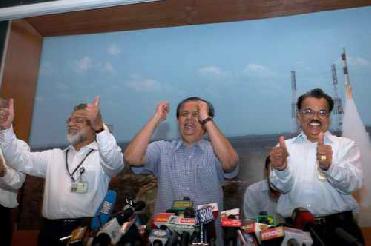
A jubilant ISRO team after the successful launch of Chandrayaan-1 on on October 22. PTI file photo
NEW DELHI (PTI) India demonstrated its scientific prowess in the year gone by with the launch of its maiden moon mission and created a niche for itself by validating the indigenous design of an advanced nuclear power reactor fired by a mix of thorium and uranium.
While the lunar mission Chandrayaan-I catapulted the country to a select group of six moon-faring nations, the commissioning of the critical facility of the Advanced Heavy Water Reactor (AHWR) would allow India to utilise its vast thorium resources to generate electricity.
Another feather in the cap for the Indian Space Research Organisation (ISRO) was the successful launch of 10 satellites in one go -- a first for any space agency in the world.
Government also made sustained efforts to make available accurate district wise weather forecasts to farmers across the country.
The Agromet Division of the India Meteorological Department started issuing district-wise weather advisories which are expected to help farmers a great deal on deciding the appropriate time for various agricultural activities.
As scientists reached milestones, policymakers were busy framing student-friendly approaches to ensure that enough of them opt for science and boost research and development in the country.
The government unveiled scholarships of up to Rs 80,000 per year for students who choose to make a career in science. The scholarships are aimed at tapping talent at school level and encouraging them to pursue science by creating assured research opportunities in basic sciences.
Indian scientists also played a key role in building the world's biggest atom smasher the Large Hadron Collider (LHC) commissioned in Geneva in September. The 88,000 tonne 27-km underground magnetic ring through which protons race at lightening speed is propped up by 7,080 jacks supplied by the Department of Atomic Energy.
The magnets were designed and developed by the Raja Ramanna Centre for Advanced Technology, Indore. India has also supplied key components to the protection system of the LHC, machine control software to the accelerator, 50,000 litre liquid nitrogen tanks and facility for testing superconducting magnets at liquid helium temperature.
After the successful launch of Chandrayaan-I on October 22, ISRO now aims to put a man on moon by 2021-25.
For the immediate future, space scientists aim to land a robot on moon by 2012, send an Indian astronaut in space on a Russian mission in 2013 followed by an indigenous manned space mission in 2015.
The space agency has also lined up deep space missions beginning with an exploration of Mars between 2013-16 followed up by a comet flypast and asteroid landing programmes.
Chandrayaan-I, which will orbit the moon at an altitude of 100 km for two years, is tasked to create detailed maps of the moon identifying its resources and also look for ice in the polar regions.
The AHWR critical facility, commissioned in April, is seen as a stepping stone for building a 300 MW reactor which will herald the third-stage of the country's nuclear power programme.
The first stage is in commercial domain with 15 Pressurised Heavy Water Reactors that use natural uranium as fuel, operating in different parts of the country. The second stage, which envisages the building of Fast Breeder Reactors, has begun with the construction of a 500-MW prototype FBR at Kalpakkam in Tamil Nadu.
ISRO crossed a key milestone on April 28 when it put into orbit 10 satellites on a single Polar Satellite Launch Vehicle (PSLV), becoming the first country to achieve the feat.
Of the 10 satellites, two -- Cartosat-2 and Indian Mini Satellite -- were developed indigenously, while eight nano satellites belonged to international customers.
Antrix Corporation, the commercial arm of ISRO, has made a cool Rs 1,000 crore this year and expects it to grow at 20 per cent per annum in the future.
ISRO built a state-of-the-art communications satellite W2M for EADS-Astrium of Europe, which was launched from French Guiana on December 21.
The space agency is also developing a next generation rocket the Geosynchronous Satellite Launch Vehicle Mark III which will enable ISRO to launch satellites weighing up to four tonnes and reduce the cost of operation.
To support these mega plans in science, the Department of Science and Technology has launched the nation's largest-ever project to wean high-school students away from the now common engineering or medicine streams towards BSc and MSc degrees.
The Innovation in Science Pursuit for Inspired Research (INSPIRE) programmes aims to reach 10 lakh students in five years guiding them from their days in school to doctoral research.
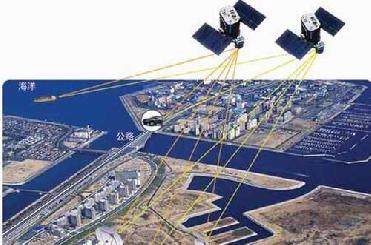 Next Article
Next Article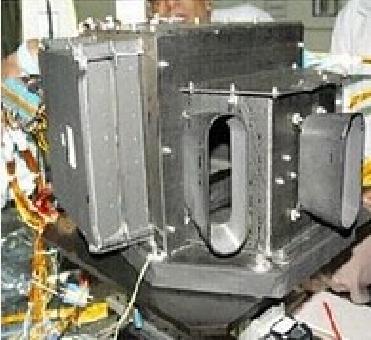

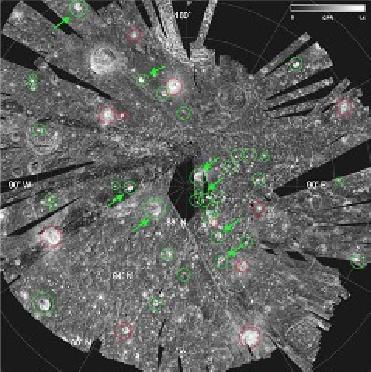
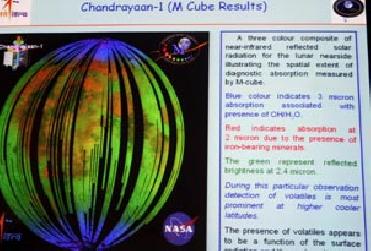










The Indian Air Force, in its flight trials evaluation report submitted before the Defence Ministry l..
view articleAn insight into the Medium Multi-Role Combat Aircraft competition...
view articleSky enthusiasts can now spot the International Space Station (ISS) commanded by Indian-American astr..
view article